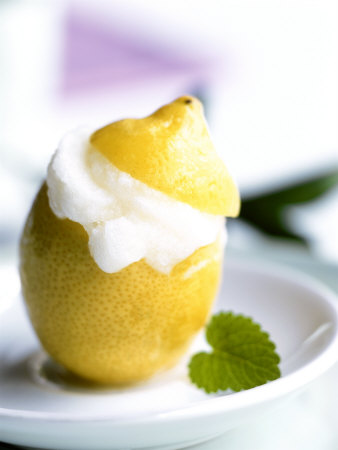 This past two weeks I have had several opportunities to see chemistry at work in the kitchen, both unexpected. The first was when I decided to soak my burner pans. Mine (I thought) were fairly clean, so I dumped them in the sink, added some warm water and dishwashing detergent, and let them soak overnight.
This past two weeks I have had several opportunities to see chemistry at work in the kitchen, both unexpected. The first was when I decided to soak my burner pans. Mine (I thought) were fairly clean, so I dumped them in the sink, added some warm water and dishwashing detergent, and let them soak overnight.The results were impressive--so impressive that I've been letting them soak for two weeks and will probably let them soak for another. You see, while I live with chemistry every day, I never really believed in chemistry until I saw the grease dissolve even from spots that were invisible to the naked eye. But I would wake up in the morning, go into the kitchen, and see dissolved grease from those invisible spots spread out around the spot like a halo. And the other thing I learned from this experience was that baked-on grease smells terrible, and that smell gets into your food. And I know this because when I put the burner pans back on the stove, the food tasted much cleaner when I cooked it the next time.
Chemical reactions take time, but the results are real and consistent. Have faith that the right reactions will occur, and soak your burner pans overnight once a week!
The second time I had a chance to really watch chemistry at work was when, as it turned cold, I actually went to the trouble of mulling wine. Most of the time, I admit, I'm lazy, and I just heat the wine, either on the stove top (be sure to unplug your carbon monoxide detector first; this is the voice of experience), or in the microwave. But mulling actually requires a poker (or other suitable piece of metal) to be heated red-hot and plunged into the wine or other beverage to warm it. (Again, the voice of experience: the wine or beer will foam up, so leave plenty of room at the top of your cup!) The difference was so extraordinary I could not believe it. You see, when you heat wine another way, caramelization does not take place, so you have less flavor because there's not the "browning" reaction such as there is with intense heat.
If you decide to try mulling, buy and reserve a separate poker for this. Otherwise you'll end up with ashes in your drink (not the voice of experience here. I figured this out for myself first).











